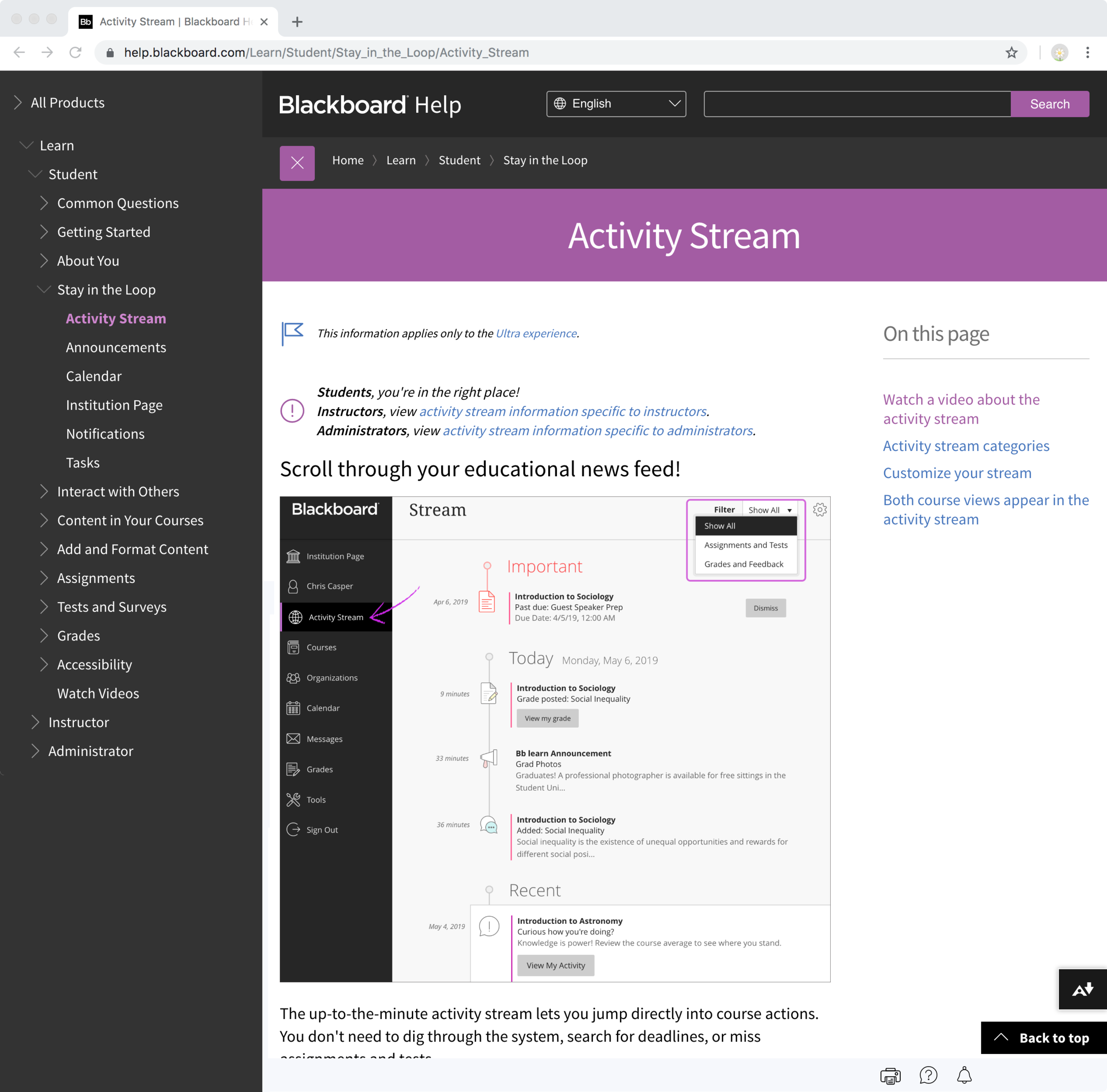HELP CONTENT IS PRODUCT DESIGN
A common mistake that software producers make is to forget that the experience of getting help is just as important as the workflow when it comes to customer experience. Product help used to be called "documentation" and came in enormous binders with huge diagrams for printing and posting on the wall -- programmers and system administrators loved those office decorations. But when it comes to serving a millions of students and teachers around the world, or consumers of everyday software, help is as much a part of the experience as how the buttons are discovered. I have made it a practice to elevate how help and writing is positioned in the development and research process.
At Blackboard, I improved the user experience by firstly bringing the authors and architects of our help materials into the user experience team, and secondly, I empowered them to transform the way help was consumed by collaborating with product designers and using design-thinking methodologies. From navigation to vocabulary selection, from translation and localization design to accessibility and user testing, we brought the same degree of care to the help system as we did to our product workflows, resulting in a world-class, multi-media help system that I continue to reference as the go-to B2B example for any software company.
The student homepage of Blackboard’s help system.
An example article in Blackboard’s help system.
At Amazon, I have increased the focus on how words impact the customer experience by defining the role that writers hold within the product development process, and how we validate our decisions. Writers who interview at Amazon Business undergo similar experiences as an interviewing UX designer. They take the lead in designing with words and validating those decisions using traditional design validation methods (from secondary research to validation studies to A/B testing). They also publish guidelines and rules to increase the first-time accuracy of words used in any new design. The infusion of voice design into so many pieces of user experience in 2019 further validates my focus on words as experience, and help as product.

